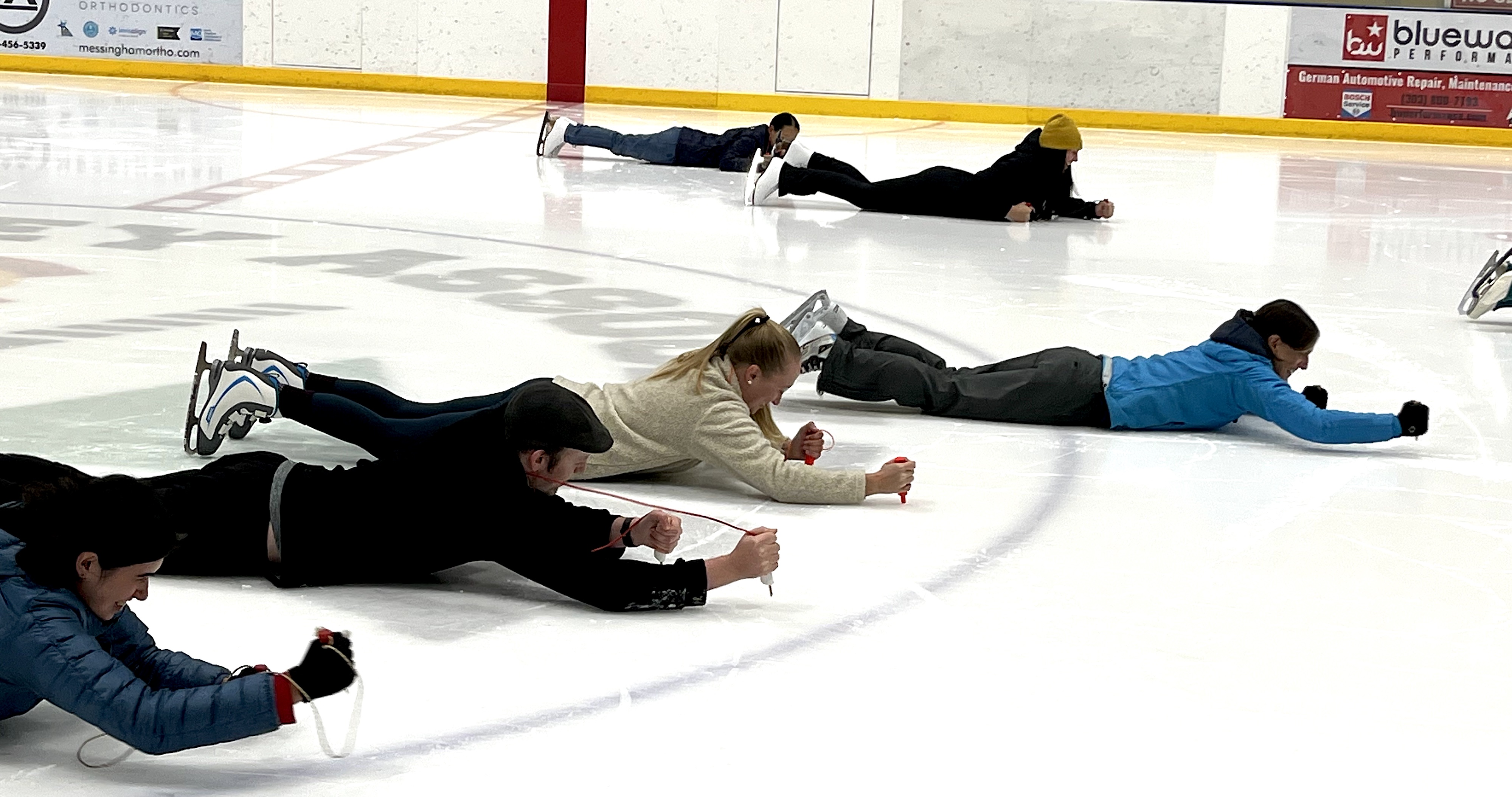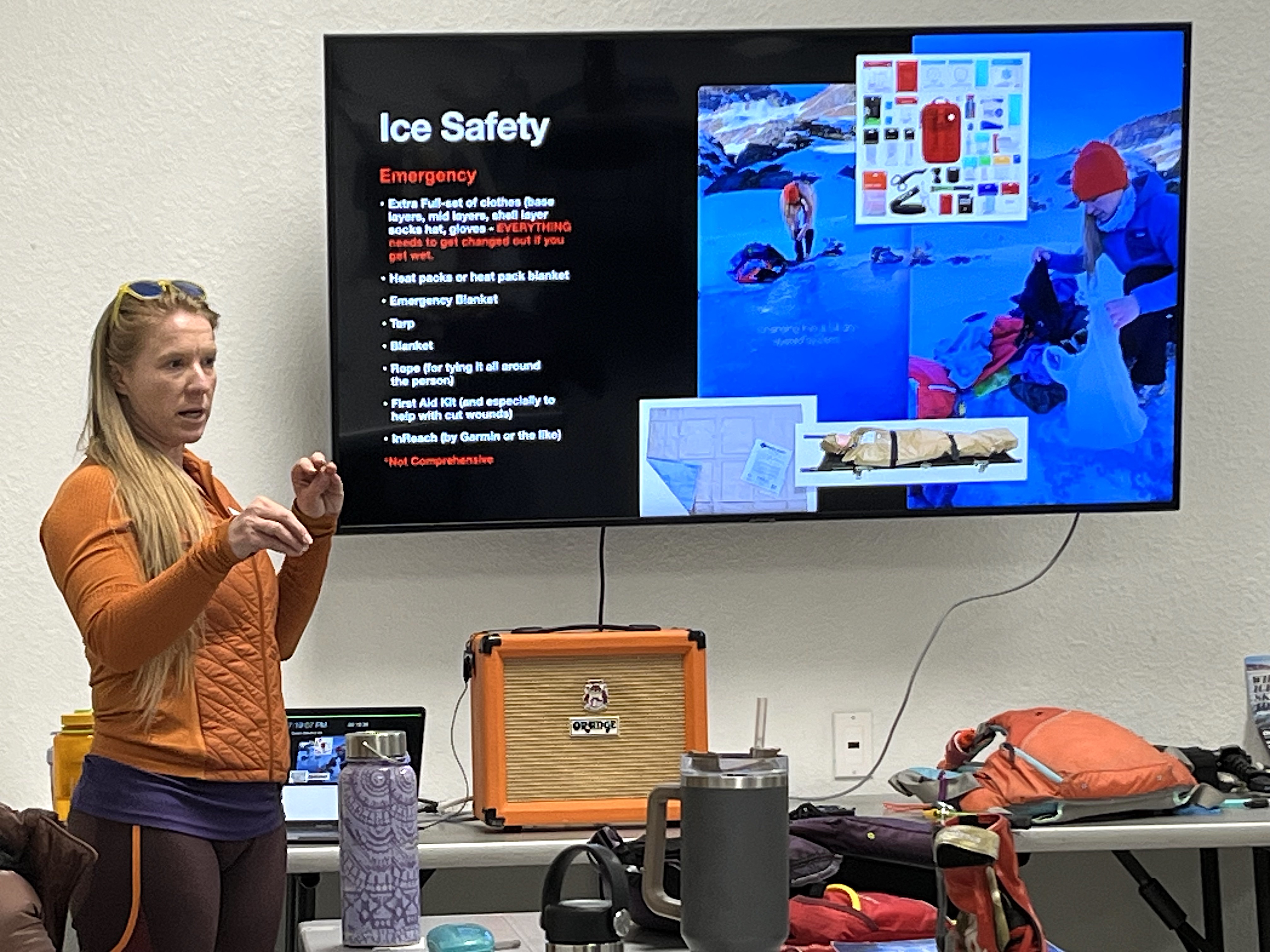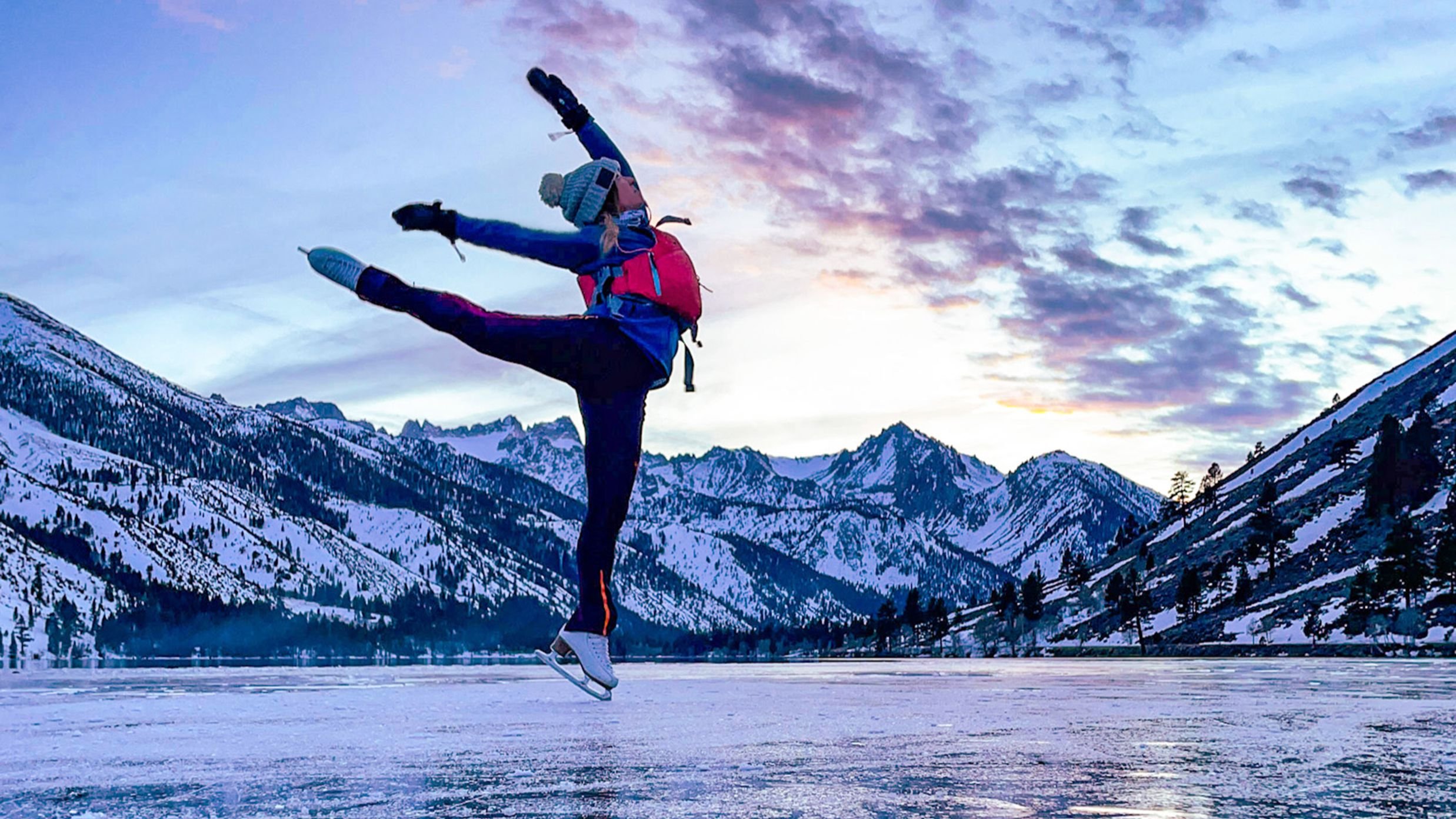By Harry Thompson
Over the years Laura Kottlowski has posted on her social media accounts hundreds of awe-inspiring photos and envy-inducing videos of her never-ending quest to seek out pristine outdoor ice in some of the world’s most secluded and spectacular settings.
From the upper reaches of Nepal to backcountry lakes inside Rocky Mountain National Park, Kottlowski’s passion lies mostly in discovering and skating on what many would consider inaccessible patches of ice. What many don’t know is that it takes more than a strong will, unwavering desire and a hearty set of lungs and legs to reach the unreachable. It also takes a dedication and discipline to fulfill every skater’s fantasy.
Now, Kottlowski is on a mission to share her secrets with skaters and outdoor enthusiasts through a series of workshops designed to teach others how they too can skate outside.
“It’s the roots of the sport. It’s where it all came from,” she said. “I’m also a mountaineer and an outdoors woman, so the ability to connect my passions altogether is just incredible. When you find pristine mountain ice in an arena setting, it’s hard to go back indoors.”
But indoors is where Kottlowski offers her workshops, at the Apex Center Ice Arena in Arvada, Colorado, which includes both classroom and on-ice sessions that discuss everything from how to track weather patterns to testing the ice to make sure that it’s safe enough to stand and skate on.
When it comes to making the investment in these locations, it’s best to do as much homework as possible. Before she even leaves home, Kottlowski pours through a ton of data found on a variety of weather apps and websites, including Accuweather, where her father is a senior expert meteorologist.
Once she arrives at the frozen lake, typically after a several mile hike into the wilderness, Kottlowski uses the old tried and true method of finding a large rock (two fists in diameter and as round as possible) and tosses it high into the air — an impact test of strength and quality. She is not only looking to see how the rock bounces off the ice but the sound that it makes. A more solid thud means the ice is at least three inches thick and depending on the ice crystal construction could be good to skate. Anything two inches or less tends to make a higher pitched sound, gets “stuck” or goes crashing through the ice. Then she carefully slides out onto the ice and uses an ice screw to bore a hole in the ice and sticks her finger or a measuring tool into it to gauge the thickness.

From there it’s time to put on the skates and carefully inspect the ice for color and consistency along with pressure cracks. As she glides along the pristine ice, she keeps her trusty rock with her, regularly tossing it in front of her to ensure her path forward is safe.
It’s a tried-and-true method that is an integral part of her three-hour workshop. She also runs through a checklist of necessary safety gear she strongly recommends that every skater brings with them, and basic rescue techniques through hands-on scenarios once the workshop shifts from the classroom to the rink.
As she points out several times during the evening, “You are your own rescue team when something happens on the ice.”
And Kottlowski knows this all too well. Back in February 2022, she was skating with a group of friends on Stampede Reservoir in northern California when something about the ice felt strange. She and her friend quickly skated to safer ice but others were not as fortunate and had broken through the ice.
That was when Kottlowski used her 15 years of outdoor skating experience and shifted into rescue mode, pulling out her rope bag and tossed it to those in the water. During the effort, she had to break through 50 feet of ice to help rescue three skaters. Unfortunately, one 72-year-old skater suffered a medical episode and did not survive.
That tragic event has only strengthened Kottlowski’s resolve to not only take her own safety precautions whenever she is skating on outdoor ice but to share her experience with others.
“That accident specifically and what I had been doing prior to that, which is ice education online, kind of said to me that I need to educate on this more,” she said.
So far Kottlowski has held four workshops at the Apex Center Ice Arena where she also serves as a Learn to Skate USA® instructor. With a limited class size, each session has quickly filled up as word of mouth and interest on social media has spread the word among the local skating community.

Kottlowski hopes to expand her business to online workshops and field trips to some of her favorite skating areas, including Rocky Mountain National Park.
Currently, there are no outdoor skating guides in the United States like those that are found in Nordic countries such as Sweden, Finland and Norway. To get there she has had to maneuver through a complex system to gain the proper credentials and certifications, not to mention the necessary insurance coverage to lead such a skating excursion.
“It’s something that I am learning the ropes of right now. There’s a lot of guiding restrictions that I am learning and needing to jump through some hoops,” she said. “They have ski mountaineering guides and skiing guides but they aren’t accepting wild ice skating guides yet. I think it’s just something where I will have to do a bit of legwork and try to get it approved in the future.”
It will be the next chapter in her lifelong love affair with skating that began as a 6-year-old in State College, Pennsylvania. During the summer after her junior year at Penn State University, she had an internship with a marketing agency in Boulder and made the permanent move after graduating a year later.
Over the course of her career as a graphic designer, Kottlowski has worked with numerous clients, including U.S. Figure Skating where she helped assist marketing agencies in the rebranding the Learn to Skate USA® program.
Along the way, her skating adventures have taken her to some pretty spectacular locations, including Pacific Tarn in Colorado — the highest lake in the U.S., Alaska, California, Alberta, British Columbia and two of the Gokyo lakes in the Everest region of Nepal, where she worked with the local tourism board to organize the world’s highest elevation skating show and pond hockey game.
“It’s just the freedom, having all the elements come together. It’s more about you and your connection to the outdoors and the ice than it is about anything else,” she said.
“In a rink setting, there is an element of proving yourself to other people and your skating ability and the competition of it all. Whereas outside, it’s purely for yourself and your enjoyment.
“A lot of times out there, I’m not even working on anything specific. I’m just exploring a weird ice formation and looking at the schools of fish underneath my blades. The magic of clear ice and seemingly being suspended over the water is incredible. It’s the most euphoric thing that I’ve ever found in my life.”


